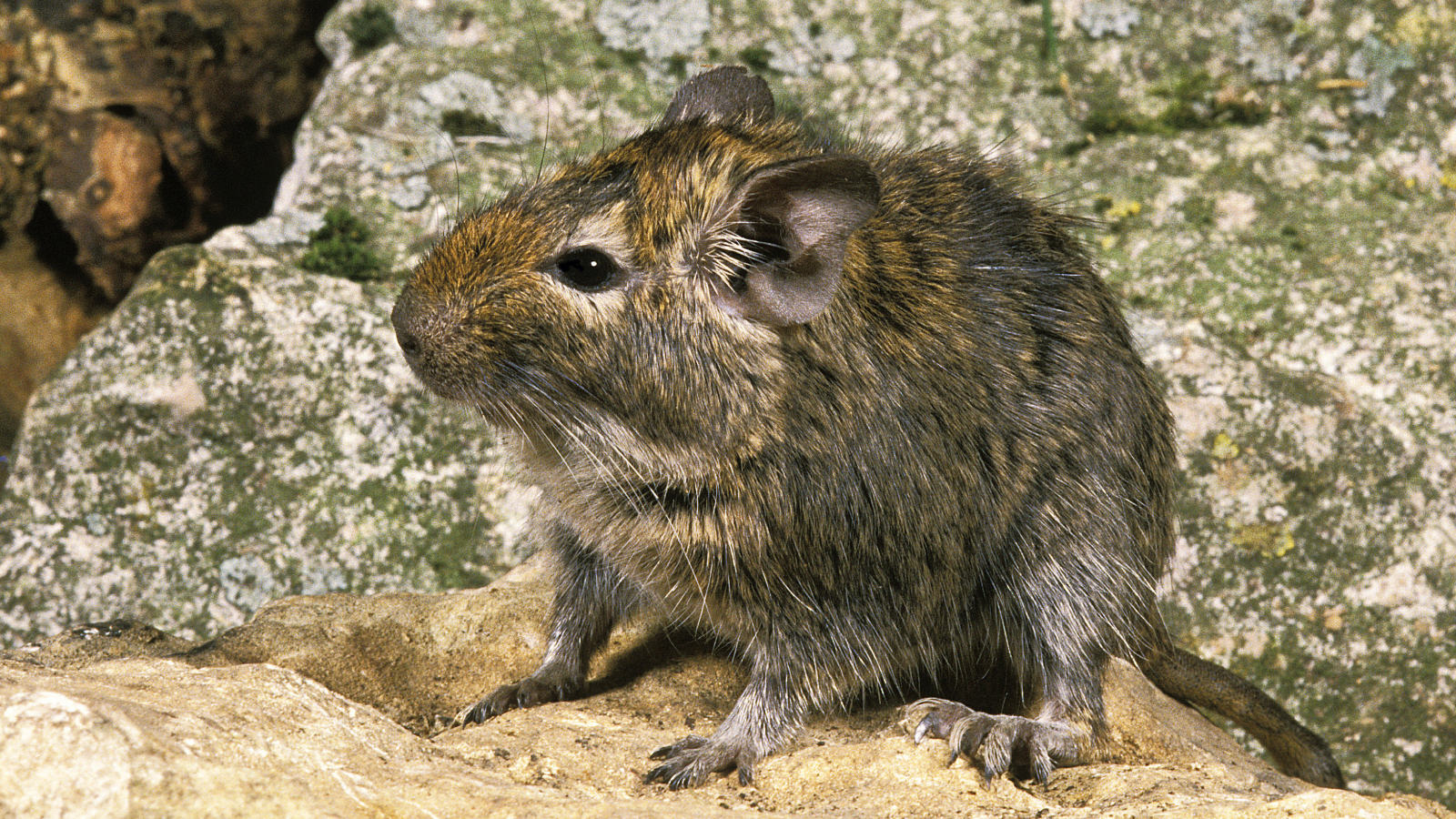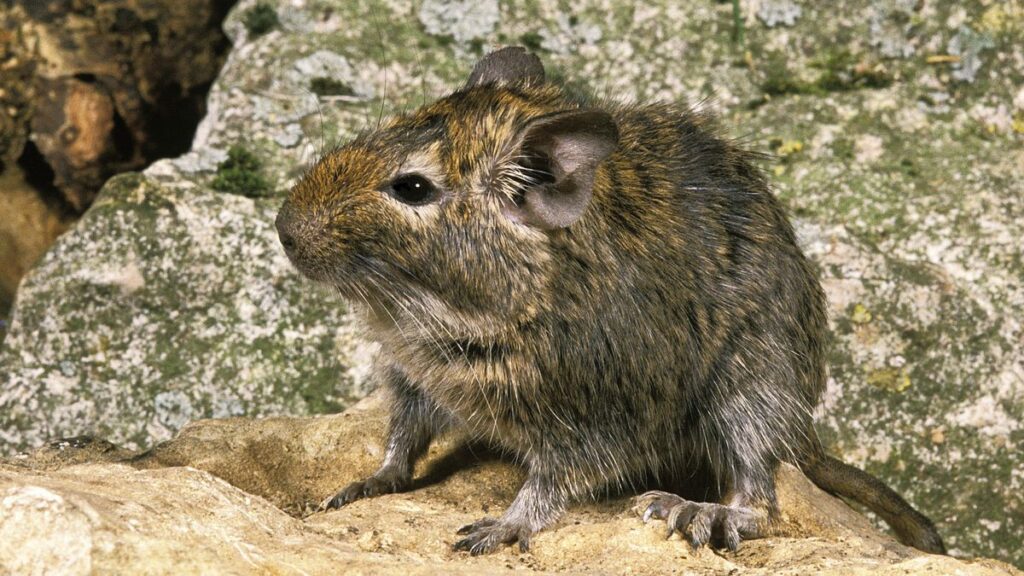
Name: Common degu (Octodon degus)
Where it lives: Central Chile
What it eats: Grasses, seeds, bark — and sometimes their own poop
Why it’s awesome: At around 10 to 12 inches (25 to 31 centimeters) long with brown fur, degus look like oversized hamsters with long tails. These round rodents are endemic to the Chilean Matorral region in South America, where they live in complex underground tunnels with as many as 10 other degus.
And within these degu societies, pee is of paramount importance.
These sociable animals use urine in several intriguing ways, including to bathe. To get clean, degus roll around in sand soaked with their own urine. Degus also use urine to scent mark their communal trails and territories.
Their urine reflects ultraviolet (UV) light —– which common degus are able to see. This enables them to identify social hot spots and territories, as well as other degus that have urine on their fur. Fresh degu urine reflects UV light more strongly than older urine. According to a 2003 study, degus can use their UV vision to distinguish between fresh and old urine marks, which helps them locate where others have been and where social activity is happening.
Unlike many other small rodents such as hamsters and chinchillas — which are nocturnal — degus are active during the day and sleep at night.
They’ve also got a nifty escape tactic to flee predators. If caught, common degus quickly detach their tails — a trick called “degloving” — which creates a distraction and gives the degus a chance to escape. However, the tails don’t grow back, so this is a one-time trick.
As highly sociable animals, common degus communicate in many different ways and can make up to 15 different sounds. They chatter their teeth when they are frustrated, squeak when they are scared, and make high-pitched warbling and barking sounds when excited. Degu mothers also make specific maternal calls when they are nursing their young, which is thought to stimulate and reinforce feeding.
